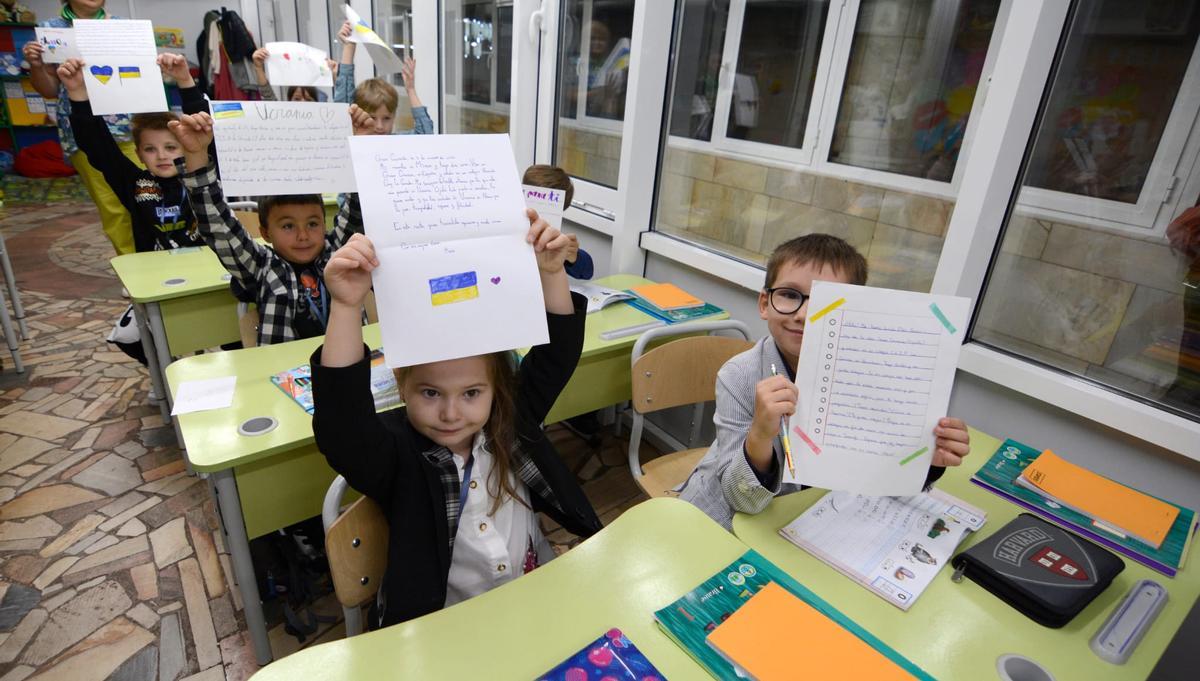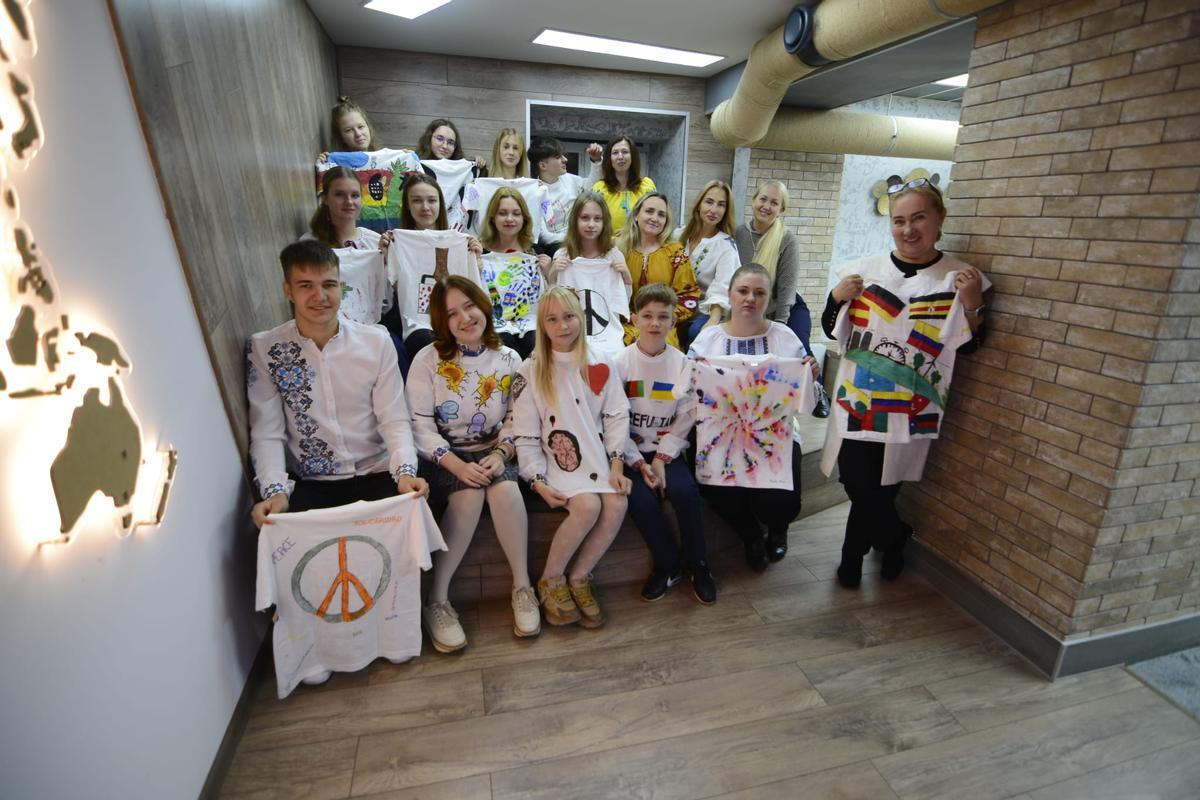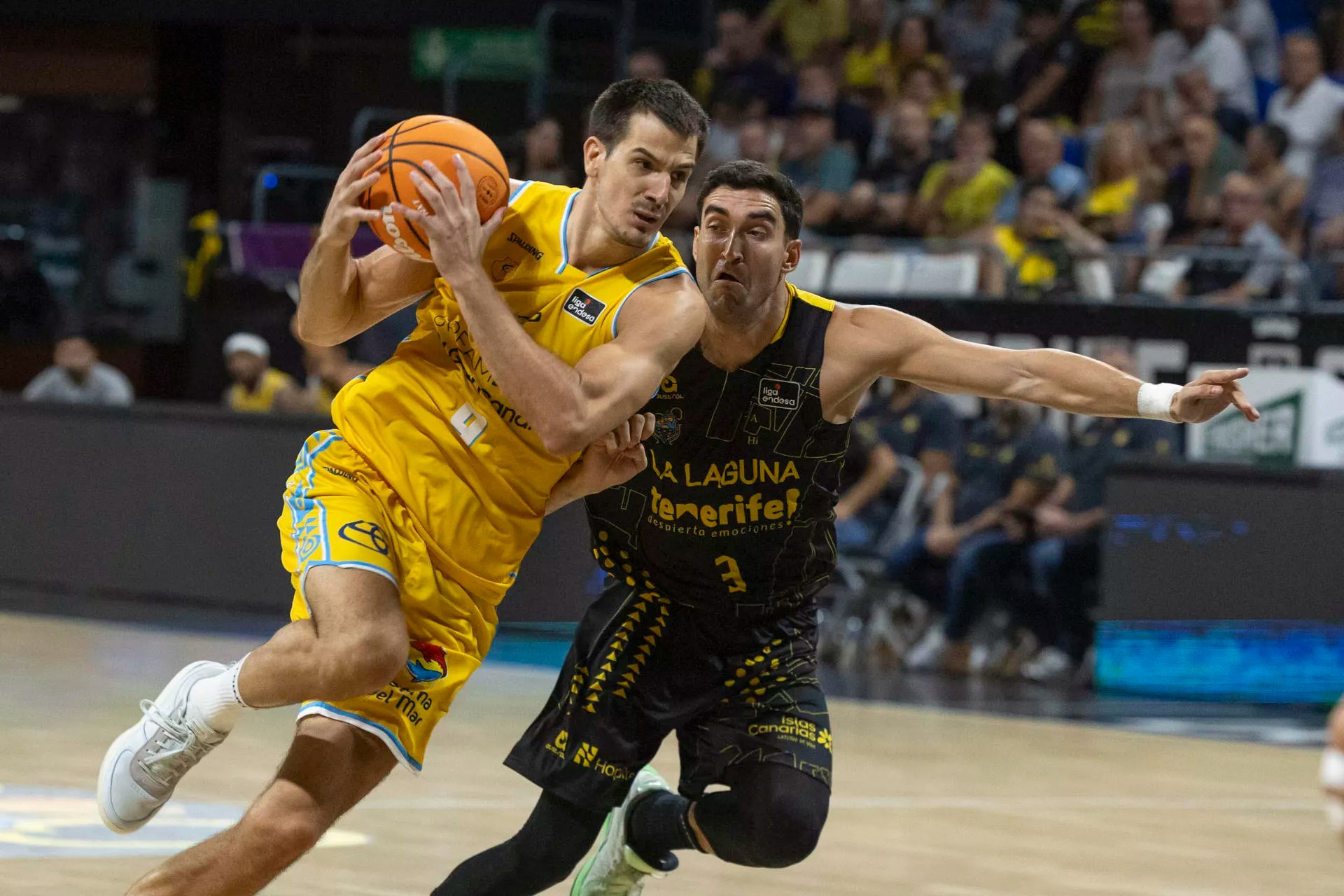“There is also life in war. Time does not stop.” When war reporter Alberto Hugo Rojas began covering the conflict between Russia and Ukraine, he did so with a clear objective: “Turn the photographs into a tool to educate and raise awareness”.
It has been over two decades since he started his journey in places that were in conflict. First it was Palestine and Israel, then he travelled to places like Iraq and Syria. Images related to crises and humanitarian emergencies, such as migrations, continued to be added to his photographic camera.
After being on a constant journey of “coming and going”, holding photographic exhibitions and giving talks, the Paz en Construcción, enredados con los derechos humano project emerged. Through this, Rojas visits different schools in Canary Islands to “try to make a difference” because one thing he has confirmed over the years is that the photos taken, in addition to portraying war, “reach the students“. “Once you tell them the story behind the image, they connect with it,” he emphasises.
[–>
What is the project uniting Canarias and Ukraine?
[–>
Now, Paz en Construcción has become something “very beautiful to understand a bit more of the obvious”. And it was in one of the talks he gave last year at CEIP La Cerruda, in the town of Vecindario, in the municipality of Santa Lucía de Tirajana, that the bridge between Canary Islands and Ukraine was born.
“The children at the school gave me some letters to deliver to the children in Ukraine. It was the school’s initiative,” the reporter comments. Wrapped in decorated envelopes and under the title Letters to Ukraine, the texts travelled across the country. “I left in June of last year and made many trips until September. The letters, meanwhile, slept in my suitcase,” the photographer recounts.
At that time, due to the conflict situation, classes in Ukraine were not held in person. In fact, they had been “online for four years because the Russian invasion was followed by the pandemic situation“. However, authorities in Kharkiv decided to reopen the schools. This time in a unique way.
According to Rojas, new schools were created in the subway, “underground, as the stations were considered safe places and gradually turned into schools”.
The way classes were taught was also somewhat unique. Between 1,300 and 1,500 children attend every day, twice a week, for just two and a half hours. “The station corridors are very wide and they were able to turn them into classrooms. The metro passes below, it can be seen through the window, but the classroom is above,” describes the reporter.
After completing the required procedure, Alberto Hugo visited the location. “It was a Friday morning,” he remembers and gradually handed out the letters from the students of La Cerruda. But the Ukrainian students also had something to give: a large cardboard sheet where drawings of doves occupied a good part of the paper.

Children hold the cards. / Alberto Hugo Rojas
“The war is only told in deaths and time”
[–>
Regarding Ukrainian students from high schools, last year they had nowhere to attend in-person classes. The IES Santa Ana, in Tenerife, also made t-shirts for the youth of Kharkiv as a gesture of support. Rojas took them to the city and delivered them, although not in a classroom. “I understand that they are creating a network of underground schools, not only in the metro tunnels, but also in the parking lots of shopping centres. The goal is to turn them into high schools,” he states.
Now, more educational centres have joined the letter project, and there are texts written by students from nursery, primary school, and special education classrooms. The most beautiful thing, highlights Rojas, is that the children become aware of “stories of young people and children like themselves. They see each other.”

Students from Ukraine with the t-shirts made by the students of IES Santa Ana. / Alberto Hugo Rojas
The importance, from his point of view, lies in understanding what is behind each fact in question: “The war is only told in deaths and time. The problem is that there is no discussion of life in war. Only the basics, the simple things are mentioned.” Likewise, one of the most important aspects is to show students that a conflict is not “a game or a movie.”
[–>
Close to 80 educational centres throughout the Canary Islands are participating in various initiatives of Peace in Construction. This is how “first-hand” testimonies reach the students of the Canary Islands. This has become a method to “cultivate empathy” and ensure human rights which, in the words of Alberto Hugo Rojas, “are protection and the key is to teach that they must exist for the security of all.”
















